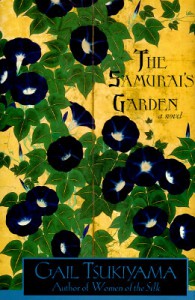Review


There’s a lot going on in this novel. A young man is sick with tuberculosis, sent to a remote seaside village to recover (or die, though no one mentions that possibility). He’s a would-be artist, experimenting with expression in painting. The life of the family he left behind turns out to be less secure than he imagined. And this is 1937, the Japanese are invading China, he’s Chinese, and he’s staying in Japan -- he’s conflicted thinking about people he knows suffering while the people around him only think of Japanese casualties in the war; and it comes between him and a young woman he’s interested in.
So, plenty of turmoil in the circumstances of Stephen’s life. How will he respond to it internally? While he’s there, he becomes very interested in a different, but equally stressful story that began years ago, involving the caretaker of his house, Matsu, and an epidemic of leprosy, which infected Matsu’s sister and the woman he loves, Sachi. Sachi now lives in a village in the mountains where people disfigured by leprosy, hiding from the scorn and fear of the world, lead a difficult life. The story of how she came to be there, and grow into her present peaceful life, is fascinating. Key to her peace is her garden: all stones, which she rearranges. This is the most important symbol in the novel -- it indicates that art can be made from stones, because beauty comes from within -- Sachi says "its beauty was one that no disease or person could ever take away from me." Matsu, too, is an artist, cultivating a garden near the ocean, which he recreates every time a storm uproots it. Together the two of them survived a lot of heartbreak although some of the people they loved didn’t do as well.
Even though Stephen realizes how helpless he is in the face of the forces of nature and the folly and cruelty of humans, the year he spends in the Japanese village before returning home provides him with the beginnings of a lasting internal stability.
I can only rate this novel three stars because, in spite of the good qualities I highlighted above, there’s something a bit pedestrian about the way it’s written, the dialogue doesn’t always ring true, and it occasionally has difficulty with emotional tone.
So, plenty of turmoil in the circumstances of Stephen’s life. How will he respond to it internally? While he’s there, he becomes very interested in a different, but equally stressful story that began years ago, involving the caretaker of his house, Matsu, and an epidemic of leprosy, which infected Matsu’s sister and the woman he loves, Sachi. Sachi now lives in a village in the mountains where people disfigured by leprosy, hiding from the scorn and fear of the world, lead a difficult life. The story of how she came to be there, and grow into her present peaceful life, is fascinating. Key to her peace is her garden: all stones, which she rearranges. This is the most important symbol in the novel -- it indicates that art can be made from stones, because beauty comes from within -- Sachi says "its beauty was one that no disease or person could ever take away from me." Matsu, too, is an artist, cultivating a garden near the ocean, which he recreates every time a storm uproots it. Together the two of them survived a lot of heartbreak although some of the people they loved didn’t do as well.
Even though Stephen realizes how helpless he is in the face of the forces of nature and the folly and cruelty of humans, the year he spends in the Japanese village before returning home provides him with the beginnings of a lasting internal stability.
I can only rate this novel three stars because, in spite of the good qualities I highlighted above, there’s something a bit pedestrian about the way it’s written, the dialogue doesn’t always ring true, and it occasionally has difficulty with emotional tone.

 1
1









